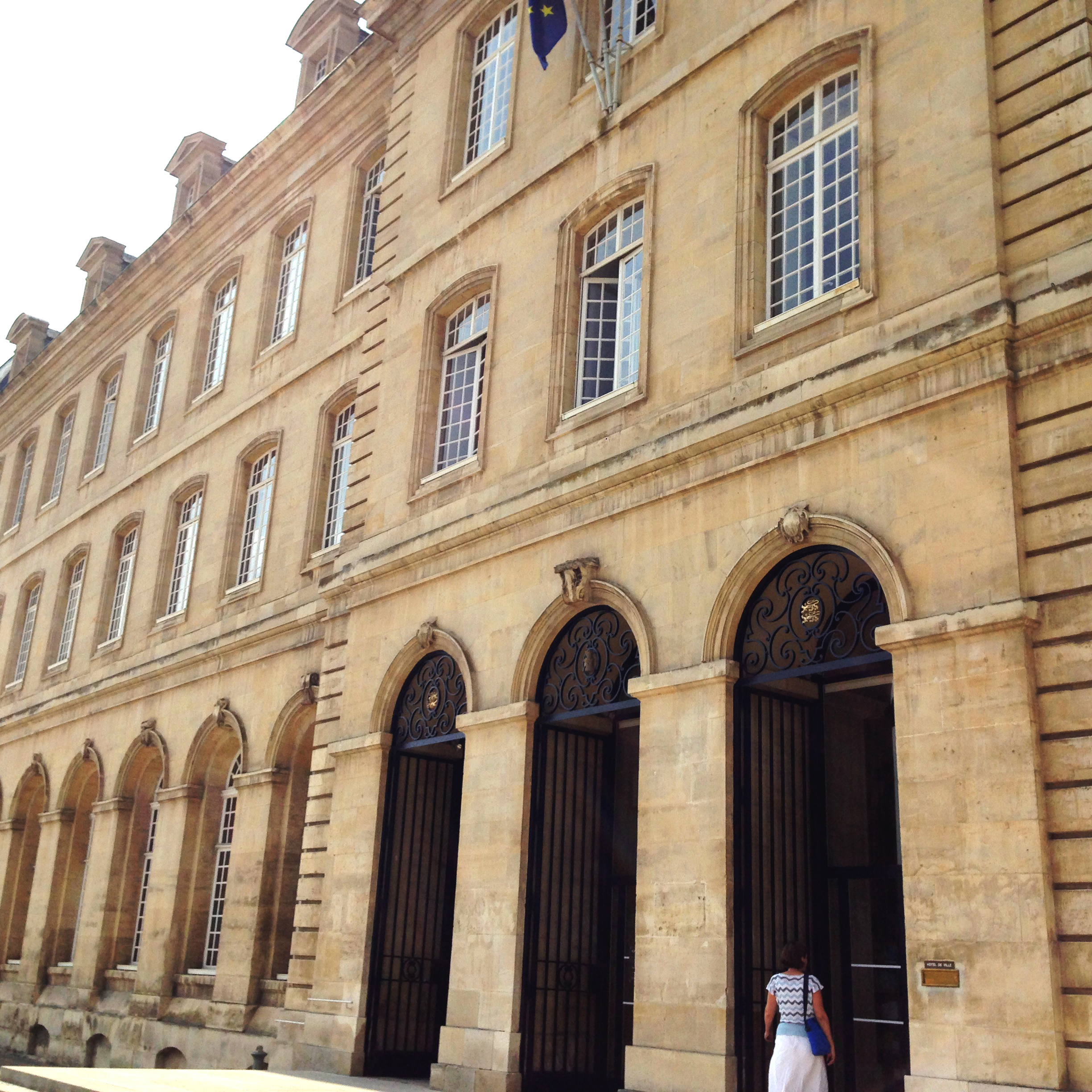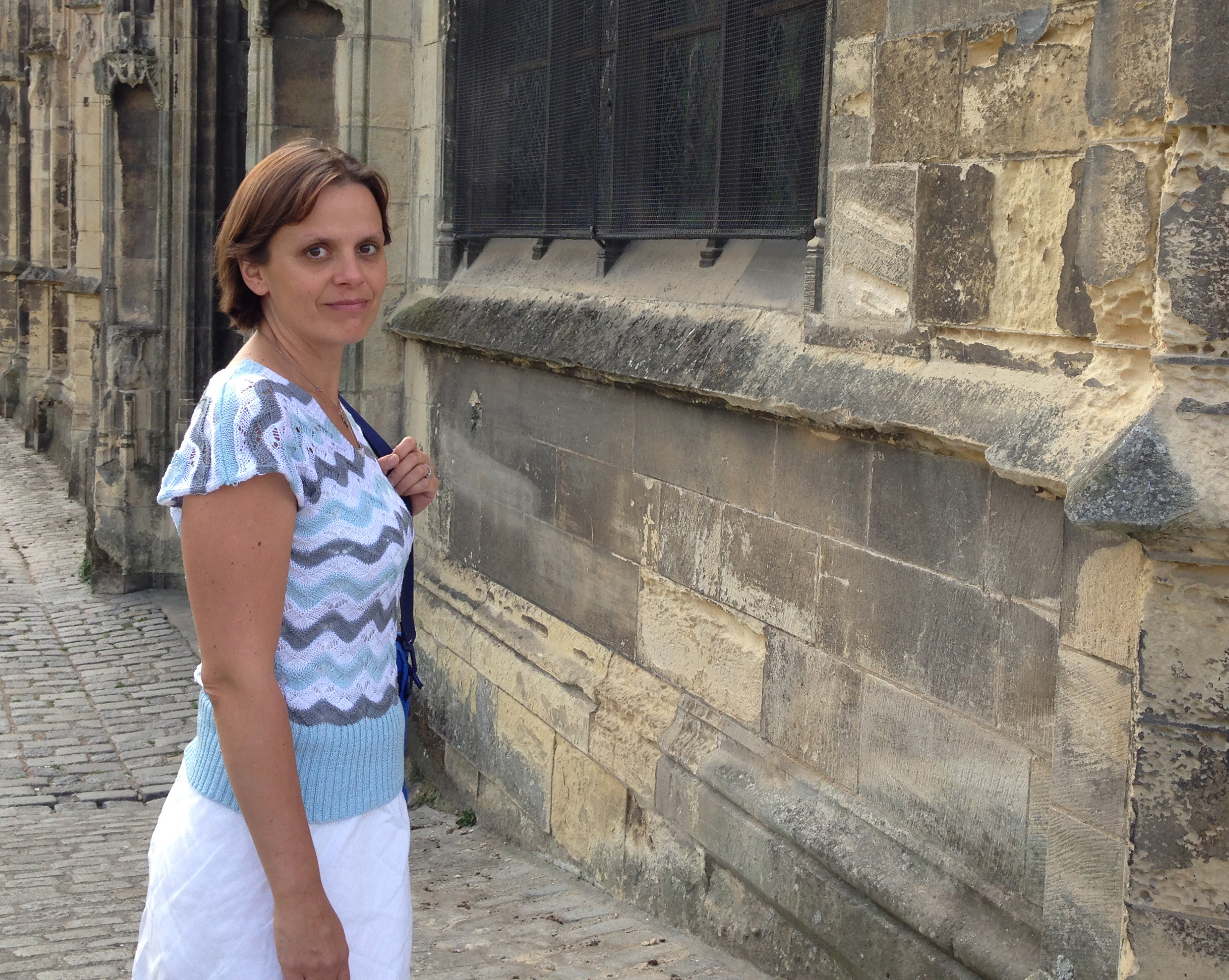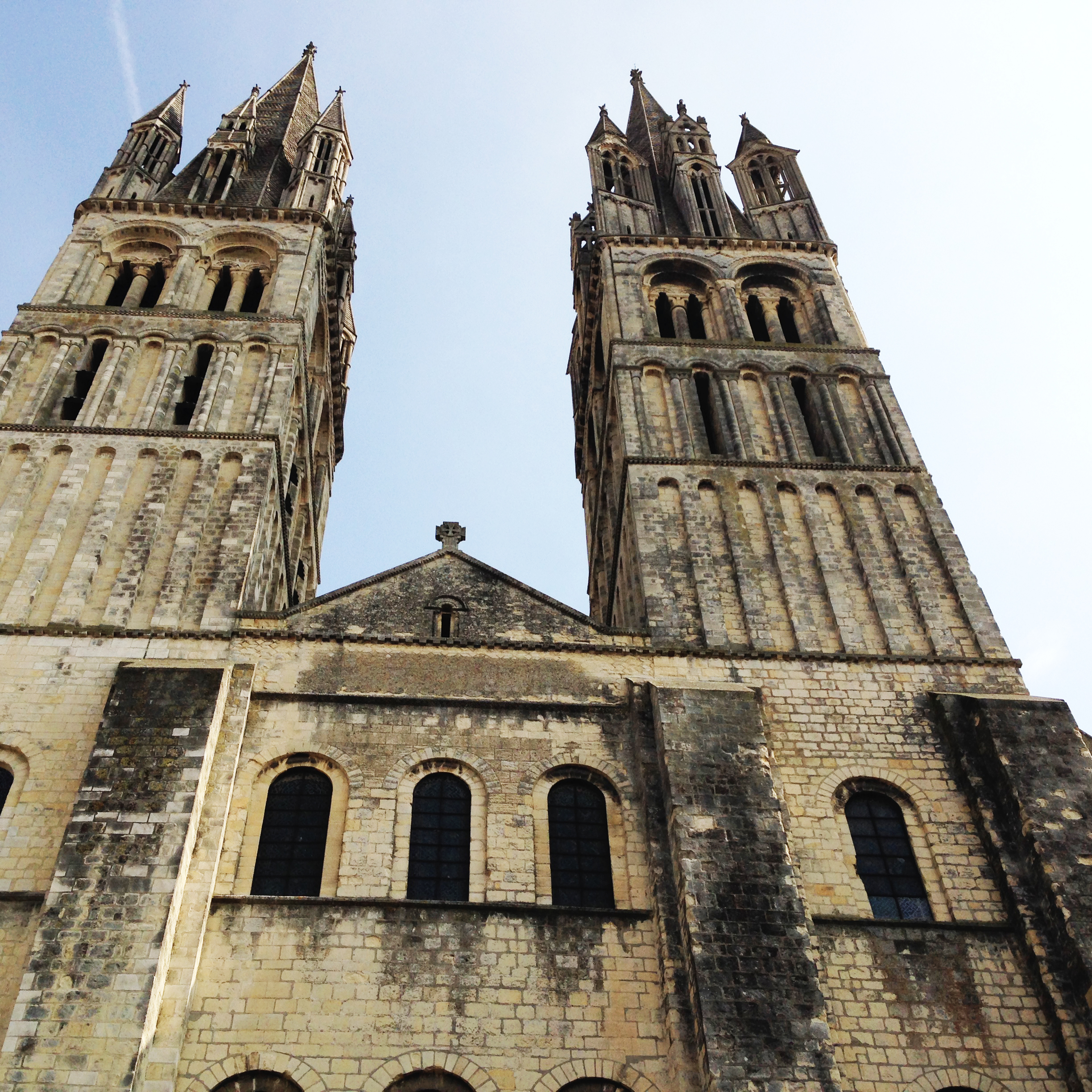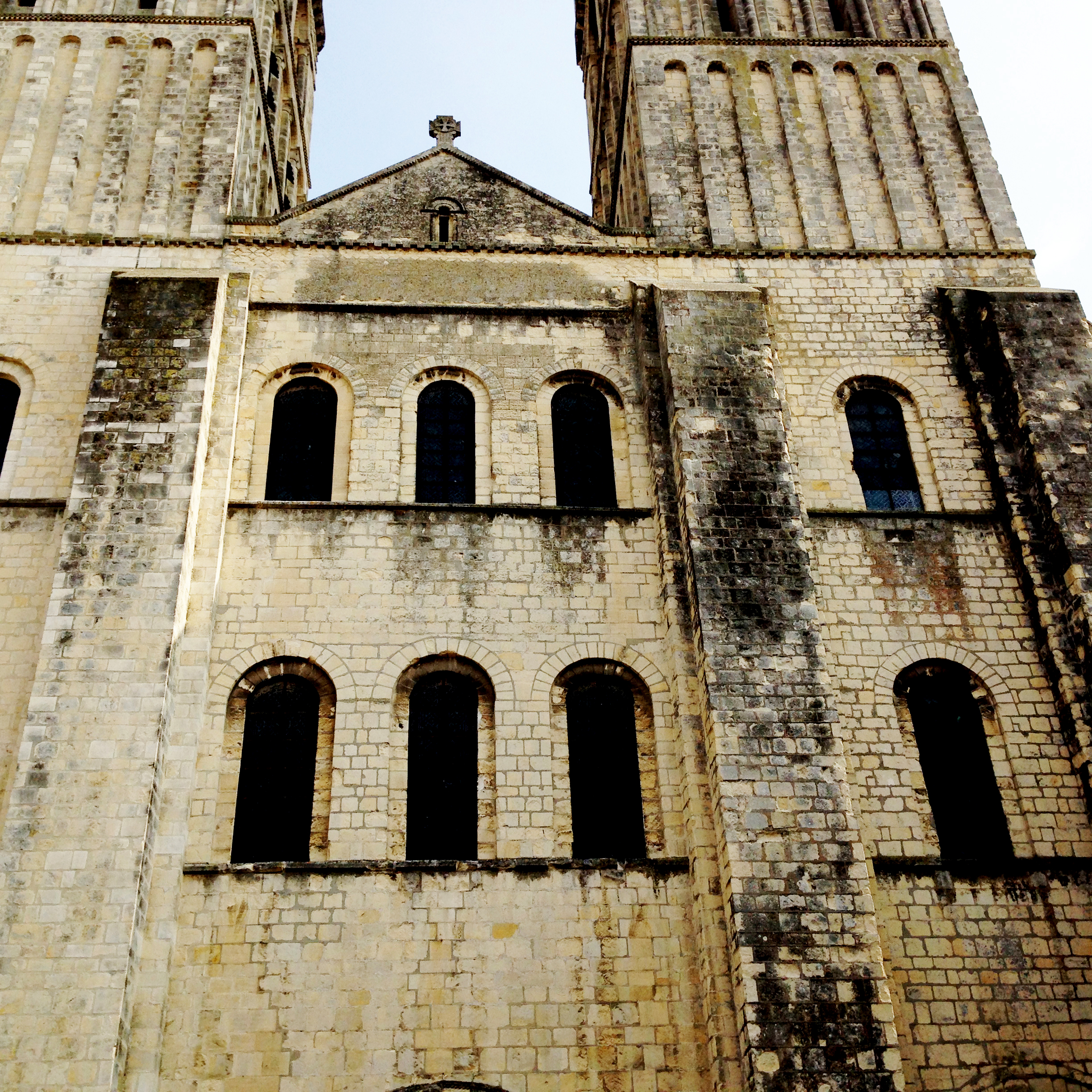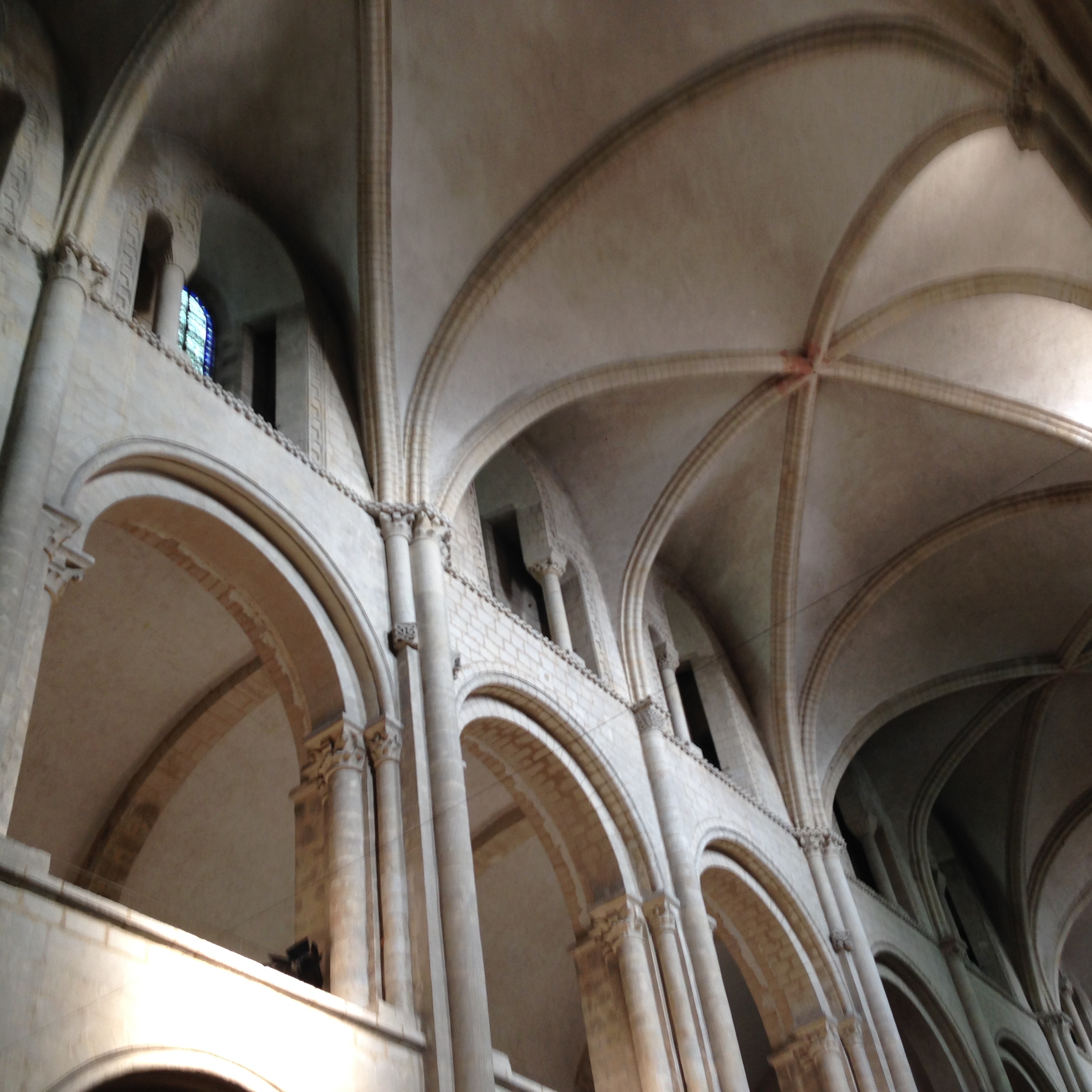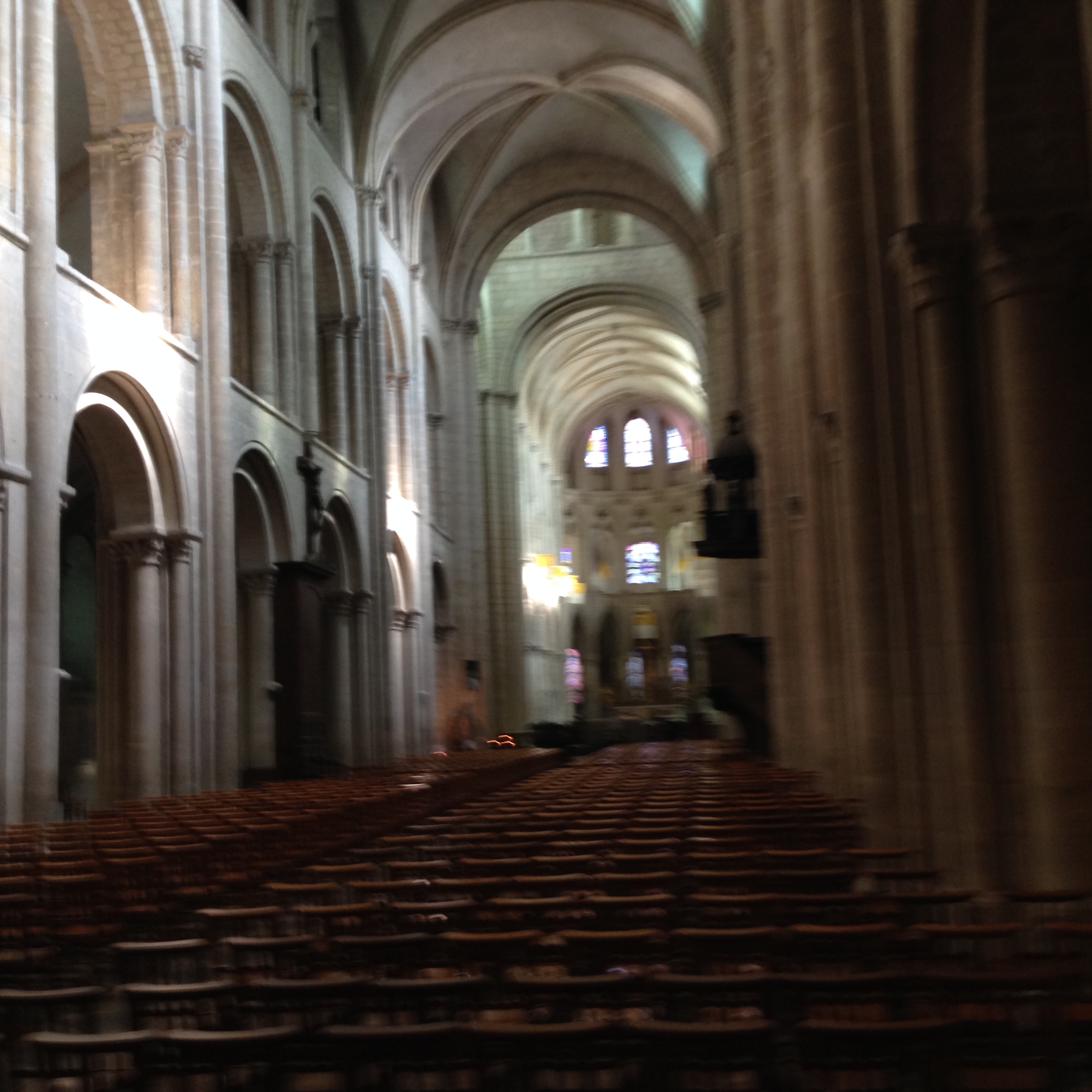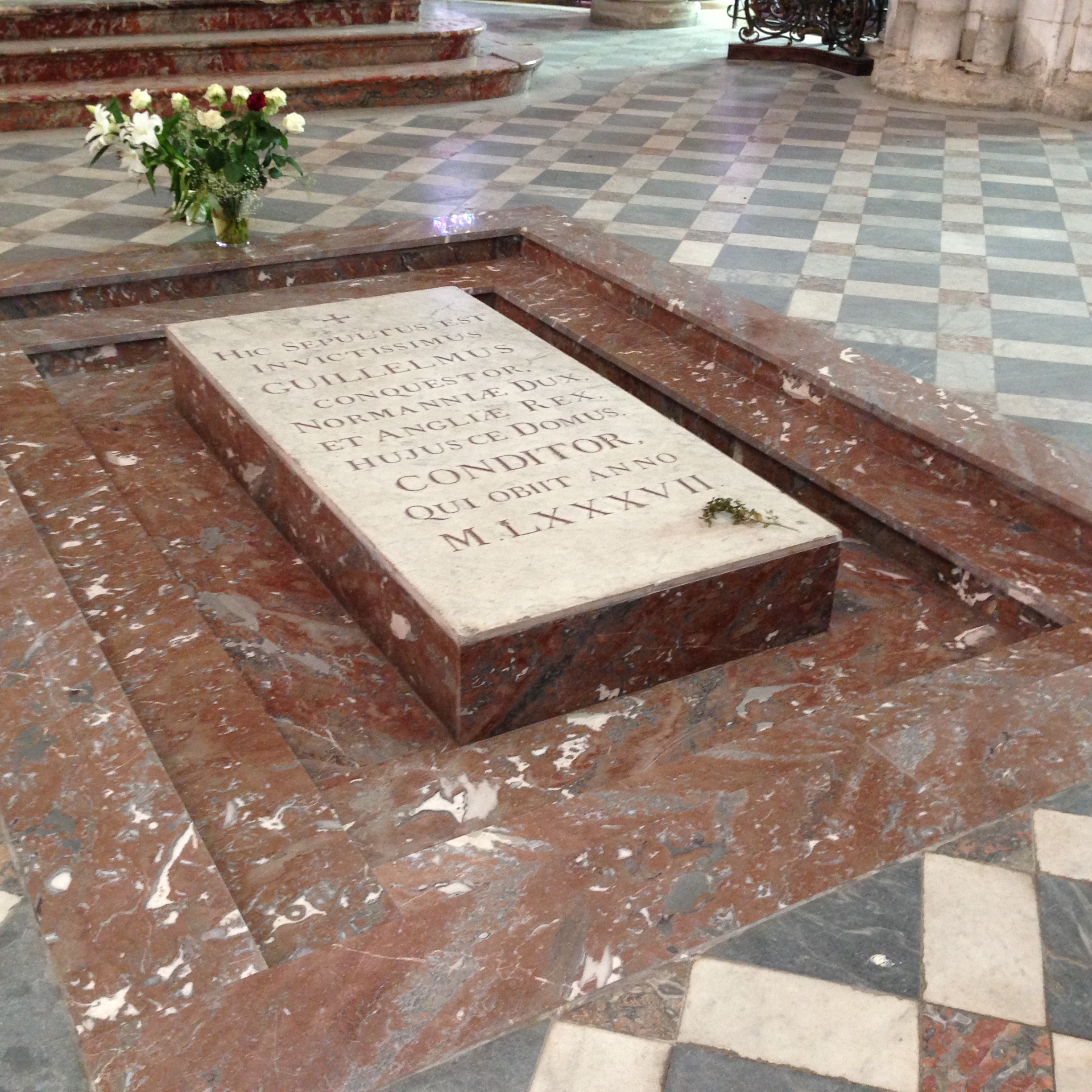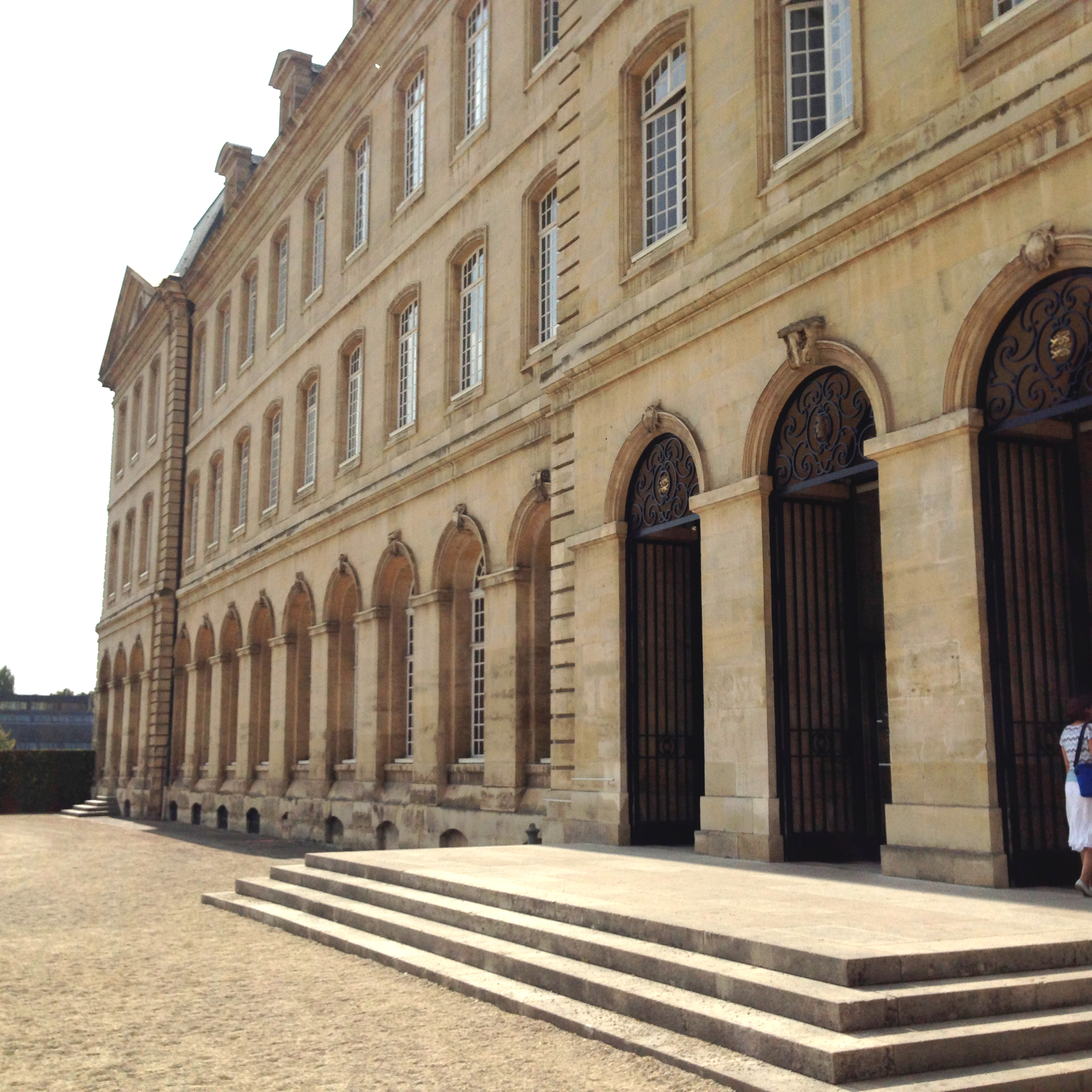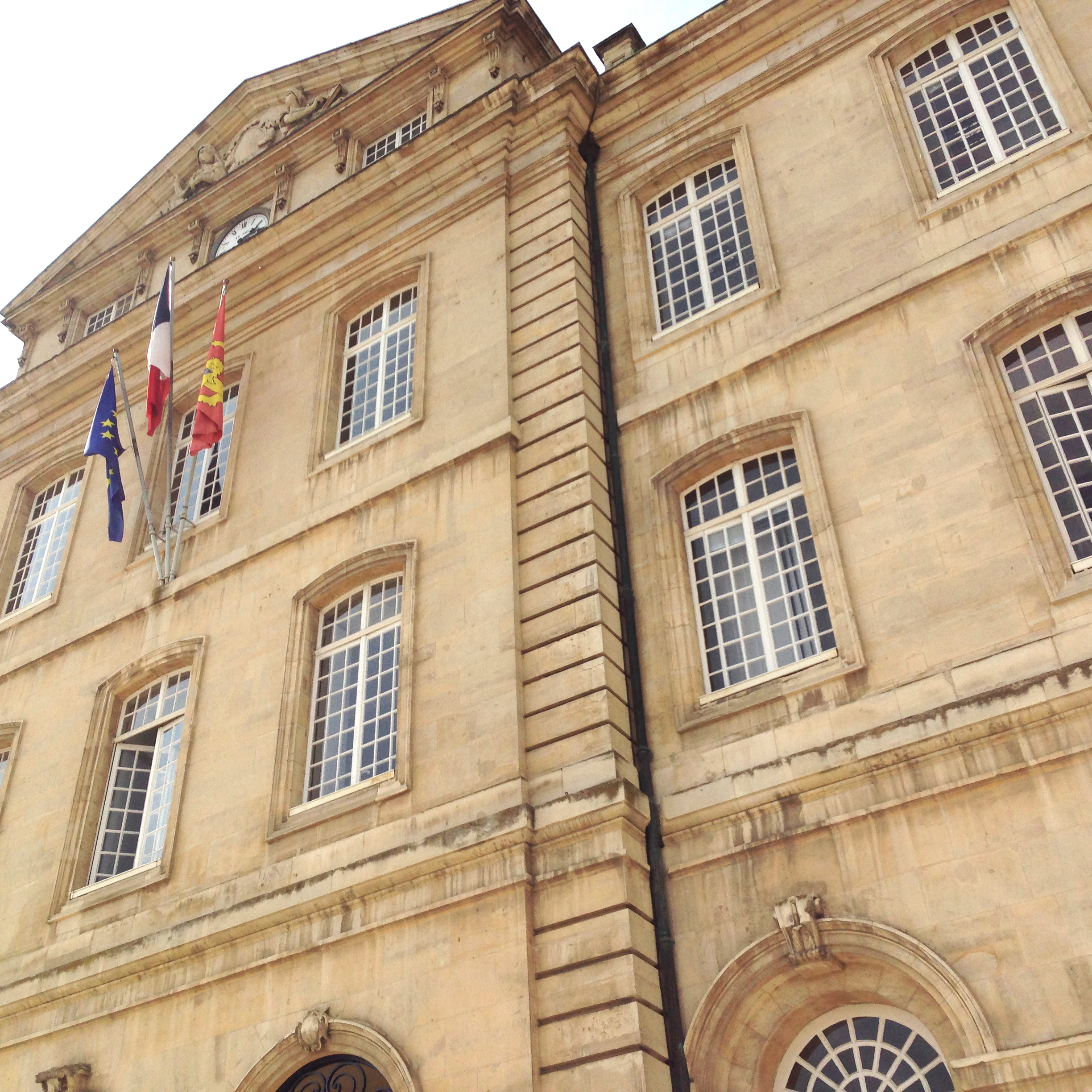In Caen, after his victory over Harold in 1066 at Hastings (and with the loot from that victory), William the Conqueror built two monasteries in Caen, site of his main chateau and principle city as the Duke of Normandy. (As his father was before him.)
He built one Abbaye for men, and one for women, with a church each. These churches largely survived the Allied leveling of Caen in 1944.
These two famous churches were built before the Gothic. They are 11th century. Which makes them "Romanesque" — the name given to the rounded-arch style of buildings that goes back in an unbroken line from the century of these churches to the end of the Roman Empire 600 years before.
It is perhaps not so well known, but Romanesque churches could reach every bit the scale and grandeur of the Gothic Churches that succeeded them. Some surprisingly so. And the Abbaye des Hommes in Caen is one of the supreme examples of Romanesque naves (the central aisle) in France.
There is a clarity, simplicity, proportion — and above all, refinement — of this nave which is highly advanced.
Today we visited various churches, including this one. The archictect of L'Abbaye des Hommes is acually known (the identity of many romanesque/gothic cathedral architects is unknown). He was a polymath and abbot by the name of LeFranc. He later actually became the Archbishop of Canterbury (the highest ecclesiastical position in England).
It was a wonderful day, that made Natalya happy, as she especially loves Romanesque. We are lucky to be in this region (Caen/Bayeux) as it is known to be particularly rich in Romanesque architecture.
:-)
This is the actual tomb of William the Conqueror himself. Abbaye des Hommes, Caen, Normandie
We also went in the Caen Mayor's building, which is built of the very fine (and famous) Caen stone (blonde). This building is pure French Classicim from the 18th century:
